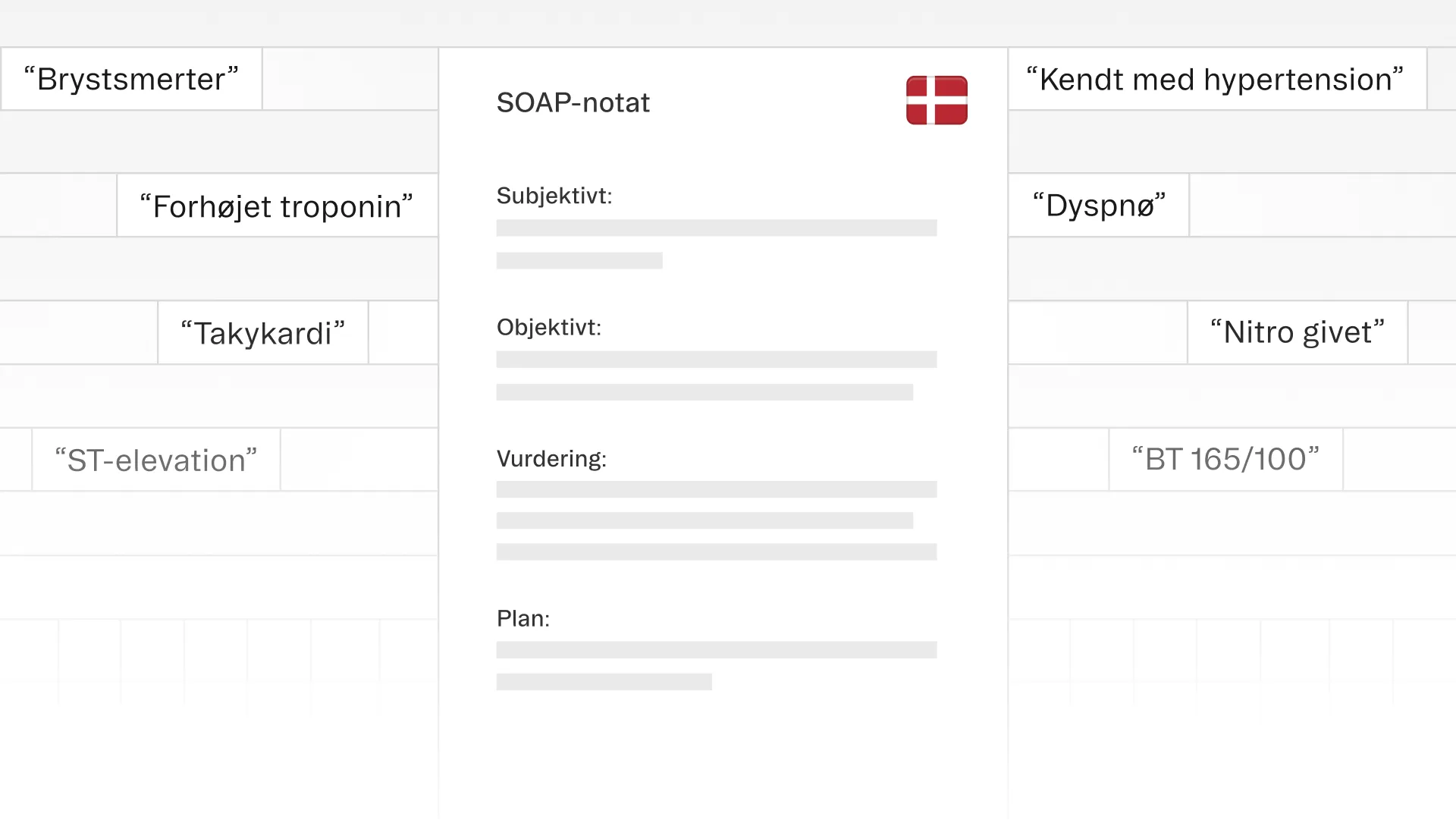Asynchronous FactsR™ : A cleaner reasoning layer for complex LLM pipelines

Until now, FactsR has powered real-time intelligence from live conversations across countries, languages, and use cases.
With this update, FactsR can now also operate asynchronously through our new REST endpoint, enabling fact extraction from any existing audio file, transcript, or text document.
This unlocks the same LLM-powered extraction engine and recursive reasoning engine, without requiring a live session. Developers can now utilize facts to process information from historical archives or written records, automatically structuring insights from any source of unstructured text.
Powering structured insights for every clinical encounter, record, or recording
Real-time processing transformed how clinical AI listens and thinks during patient encounters. But many critical workflows extend beyond the live interaction. Medical organizations handle vast volumes of preexisting notes, transcripts, and case records that are rich in clinical detail but time-intensive to review or summarize.
By introducing asynchronous extraction, FactsR now supports both sides of the clinical workflow, both what happens during the encounter, and what happens after.
With the new /tools/extract-facts API endpoint, developers can post existing text or transcripts and receive structured, machine-readable facts grouped by relevance. Nothing is stored or persisted, keeping the process stateless and private by design. The endpoint accepts any text-based input, from transcribed calls to physician notes to EHR exports, and returns extracted facts that can power downstream applications instantly.
Designed for complex, context-heavy data
Healthcare data often lives in long, dense documents. A single visit note can span multiple pages of unstructured text, with details that matter for both patient safety and administrative accuracy. Extracting that information manually or through traditional NLP methods is time-consuming and brittle.
FactsR’s asynchronous mode is built for these use cases. It uses the same contextual reasoning engine as the real-time system, applying a sliding window to interpret text in sequence while maintaining awareness of previously extracted information. The API automatically chunks long inputs for parallel processing, ensuring speed and consistency even with large volumes of data.
Powering new clinical and operational use cases
Asynchronous extraction extends what’s possible with FactsR, especially for:
- Pre-charting summarization. Convert complex, multi-source patient histories into concise, actionable summaries before the next encounter. Clinicians get structured context at a glance, while minimizing time spent reviewing long documents.
- Long-context consultations. For specialties like psychiatry or chronic care, where visits span extensive narratives, asynchronous FactsR can extract and structure key information like diagnoses, medications, symptoms, and timelines from full-length transcripts.
- Retrospective documentation analysis. Audit, research, or compliance teams can now process large datasets of historical notes or call recordings to identify patterns or extract structured variables at scale.
- Multi-channel data ingestion. Integrate insights from different formats, including clinical notes, chat transcripts, or patient questionnaires, into unified fact sets that feed analytics models or decision-support tools.
Built for developers and clinical teams alike
The asynchronous API mirrors the intelligence of the live system while offering flexibility for batch or deferred processing. It requires no dependency on Corti’s real-time infrastructure and allows integration with any data pipeline or workflow engine.
Developers can send a simple JSON payload to the /tools/extract-facts endpoint and receive a structured response with extracted fact groups and usage details. This makes it easy to embed LLM-powered reasoning into any existing system, whether for pre-visit preparation, EHR enrichment, or retrospective analytics.
Expanding the reach of FactsR
FactsR began as a real-time engine that listens, understands, and responds within live conversations. With the launch of asynchronous extraction, it now extends its reach to every other setting where clinical text already exists.
This marks a significant step toward a unified reasoning layer across both synchronous and asynchronous workflows, so that no matter when or where data is captured, it can be transformed into usable, structured insight.
Learn more about FactsR and its new asynchronous mode at docs.corti.ai.

%20(3).png)

